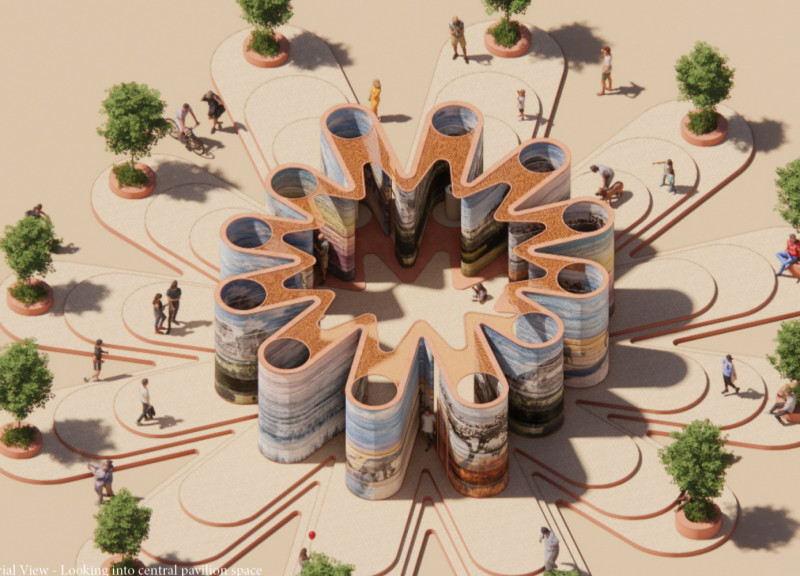5 key facts about this project
The Earth Sanctuary pavilion serves as a response to concerns about soil health and environmental sustainability. Located in a setting that underscores the importance of earth as a fundamental resource, the pavilion aims to educate visitors while fostering a connection to nature. Its design features 12 radiating fingers, each representing a different soil type, forming a spiral that encourages exploration and engagement.
Design Concept
The central idea of the pavilion emphasizes the relationship between various soil types and their roles in ecosystems. Each finger signifies one of the 12 major soil orders and acts as an entrance to the pavilion. This design promotes movement through the space while offering visitors the opportunity to learn about the unique characteristics and functions of soil. The layout creates a flow that enhances the overall experience, inviting curiosity.
Materiality
Rammed earth is the primary material used in the construction, reinforcing the pavilion’s focus on soil. This approach highlights the natural qualities of the earth, aligning with the objective of promoting soil preservation. The walls consist of different soil mixtures that enhance the unity of the structure while illustrating the diversity of soil types. The use of 12 distinct colors on the perimeter walls provides visual cues that correspond to each soil type, adding an educational dimension to the design.
Visitor Experience
As visitors approach, the pavilion reveals a complex facade with tall, sweeping walls that conceal two hidden entries between the rammed earth fingers. This element creates intrigue, encouraging deeper exploration. Inside, the atmosphere shifts to one of safety, allowing for a focused learning environment. Sample pedestals placed throughout the space provide interactive opportunities, while the walls depict landscapes affected by soil contamination, merging art with education.
Modern technology plays a role in enhancing the rammed earth walls, utilizing methods similar to large-scale 3D printing for precise detailing. This blend of traditional building techniques with contemporary methods not only updates the construction process but also showcases the appeal of natural materials. The tactile quality of the rammed earth invites visitors to experience the texture and weight of the materials that form this educational structure.



















































